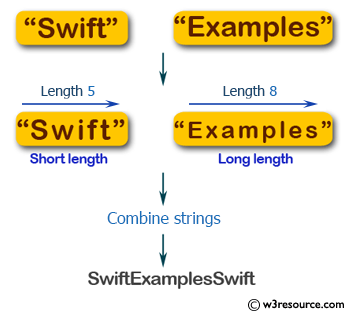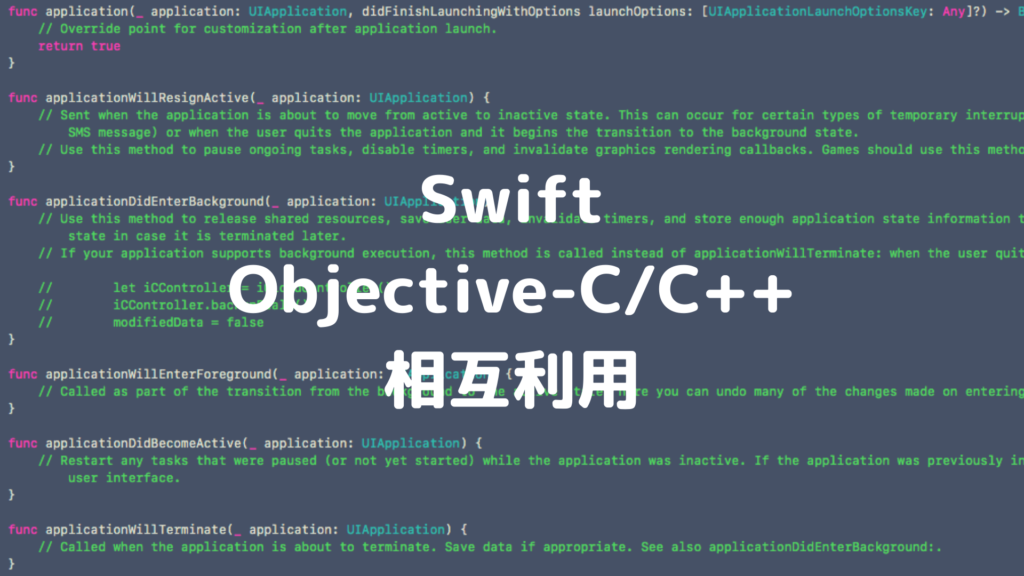

- Objc and swift share c string upgrade#
- Objc and swift share c string software#
- Objc and swift share c string code#
Through version 3.0 the syntax of Swift went through significant evolution, with the core team making source stability a focus in later versions.

Objc and swift share c string software#
Initially a proprietary language, version 2.2 was made open-source software under the Apache License 2.0 on December 3, 2015, for Apple's platforms and Linux.
Objc and swift share c string upgrade#
It underwent an upgrade to version 1.2 during 2014 and a major upgrade to Swift 2 at WWDC 2015. Swift was introduced at Apple's 2014 Worldwide Developers Conference (WWDC). Swift supports the concept of protocol extensibility, an extensibility system that can be applied to types, structs and classes, which Apple promotes as a real change in programming paradigms they term "protocol-oriented programming" (similar to traits and type classes). Īpple intended Swift to support many core concepts associated with Objective-C, notably dynamic dispatch, widespread late binding, extensible programming and similar features, but in a "safer" way, making it easier to catch software bugs Swift has features addressing some common programming errors like null pointer dereferencing and provides syntactic sugar to help avoid the pyramid of doom.
Objc and swift share c string code#
On Apple platforms, it uses the Objective-C runtime library, which allows C, Objective-C, C++ and Swift code to run within one program. It was built with the open source LLVM compiler framework and has been included in Xcode since version 6, released in 2014. Swift works with Apple's Cocoa and Cocoa Touch frameworks, and a key aspect of Swift's design was the ability to interoperate with the huge body of existing Objective-C code developed for Apple products over the previous decades. First released in 2014, Swift was developed as a replacement for Apple's earlier programming language Objective-C, as Objective-C had been largely unchanged since the early 1980s and lacked modern language features. Swift is a high-level general-purpose, multi-paradigm, compiled programming language developed by Apple Inc. TestCppClass::TestCppClass(const std::string &title): m_title(title) you can see, everything is the same as in the first example, that is, we wrap calls to C ++ code with Objective C ++, and cast to produce the necessary data types where appropriate.Objective-C, Rust, Haskell, Ruby, Python, C#, CLU, D In the *.cpp file we add the implementation of our class: #include "TestCppClass.h" Open this newly created header file and add a description of the class interface: #include When asked “should we add “Bridging header” to the project”, answer yes. We choose “Swift” as the language, device – “Universal”, don’t use “Use Core Data” and then choose a place to save the project.Īdd to the project a new C++ source file, enter the name and tick “Also create a header file”. (name of project, name of organization, identifier of organization). Run Xcode and create “Simple View Application”. ExamplesĮxample 1: Using С++ source files in a Swift-project. This variant can also be used in Swift, here’s how:ġ) In a Swift project we add source files in С++Ģ) Write a wrapper class for the C++ code in Objective-C++.ģ) Add the header file of the wrapper class to the bridging header file.Ĥ) Use the wrapper class in Swift. The most simple and trivial is to change the file extension to the implementation of the class (from *.m to *.mm) and use Objective C++ as a wrapper for the C++ code (or write the whole project in Objective C++ so that there won’t be a problem with the imported headers file).

The Objective C++ solutionīut what can we do if we need to use project code in Swift which was written in C++? In Objective-C there are several ways to use C++ code. But this problem can be worked around with the help of bridging headers we can import Objective-C class headers and they will be available in Swift. Swift is a cool high-level programming language, but it’s still quite young and doesn’t have as many libraries and components as Objective-C.


 0 kommentar(er)
0 kommentar(er)
